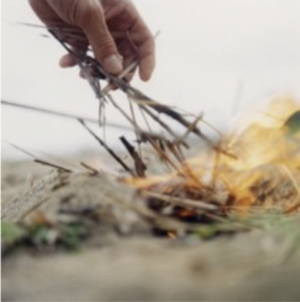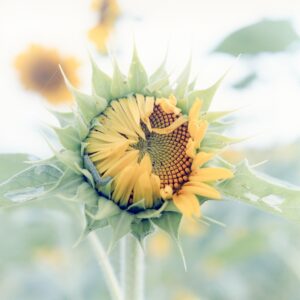*1972
“Just when it seems that everything has been photographed, in every possible way, along comes a photographer whose work is so original that the medium is renewed. Such a photographer is Rinko Kawauchi, who makes simple, lyrical pictures, so fresh and unusual that they are difficult to describe or classify. Her images document everyday things, yet could not be described as documentary. They are generally light in tone, yet somehow dark in mood. They are almost hallucinatory, yet seem to capture something fundamental about the psychological mood of modern life.” Garry Badger on Rinko Kawauchi’s book “Utatane” (Siesta), in: Martin Parr, Gerry Badger: The Photobook: A History, volume II, 2006, p. 316.
In her native Japanese the photographer Rinko Kawauchi has become one of the most celebrated photographers of her generation. After appearing in several museum exhibitions and festivals in Europe (among others “Rencontres de la Photographie”, Arles; Fondation Cartier, Paris; Huis Marseille, Amsterdam: Photographers’ Gallery, London) the Metopolitan Museum of Photography in Tokyo is preparing a major exhibition about the artist for May 2012.
Rinko Kawauchi’s work focuses on ordinary things and everyday situations. Her photographs attain their specific quality through her use of cropping and choice of perspective as well as the subtle use of natural light in combination with often virtually transparent colours. Rinko Kawauchi works in series, which, in the form of open narratives, combine poetry and emotion with representations of mortality and occasional melancholy. The subject of Rinko Kawauchi’s best-known work “Aila” (which means “family” in Turkish) is the depiction of the essence of life: animals, plants and people are shown in a sequence assembled by free association, which also includes both birth and death. Rinko Kawauchi’s fascination in fleeting beauty, the subjects of creation and destruction, and life and death are communicated in her images. “From the black ocean comes the appearance of light and waves. It helps you imagine birth. I want imagination in the photographs I take. It’s like a prologue. You wonder, ‘What’s going on?’ You feel something is going to happen.” (Rinko Kawauchi)
Biographical Summary
Rinko Kawauchi was born in Shiga in 1972 and became interested in photography while she was studying at Seian Junior College of Art and Design. As is customary with Japanese photographers she began her career as an artist by publishing her work in her own photography books.
In the year 2001 she became famous over night in Japan after the simultaneous publication of the three photography books “Hanako” (named after a disabled girl), “Utatane” (siesta) and “Hanabi” (fireworks).
In 2002 she received the prestigious “Kimura Ihei Award” for two of the books. In 2004 she published “Aila” (family), in 2005 “the eyes, the ears” (a book about the senses) and “Cui Cui” (which observes the lives of her grandparents over a period of thirteen years). Further publications by Rinko Kawauchi, which should be mentioned, are the photography books “Every day as a child” accompanying the film “Nobody Knows” by director Kore-Eda, as well as “No War”, a collaboration with Yoshitomo Nara about Afghanistan, her diaries “Rinko Nikki I + II” and “Murmuration” for the Brighton Photo Biennial 2010. Her recent publications are „Illuminance“, published 2011 by Aperture, New York and “Light and Shadow”. To date Rinko Kawauchi has published 17 photography books.













